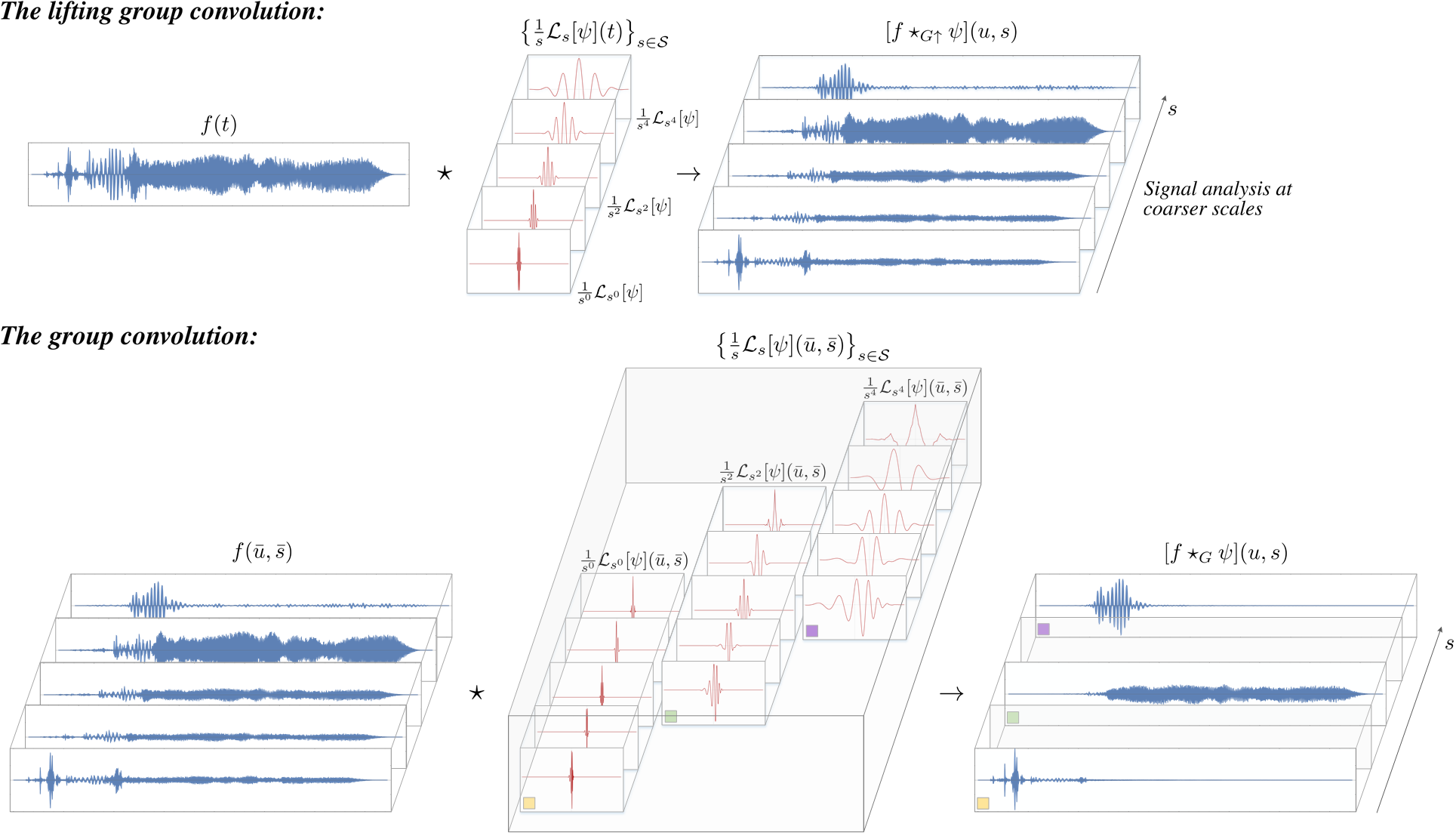dwromero / Wavelet_networks
Projects that are alternatives of or similar to Wavelet networks
Wavelet Networks: Scale Equivariant Learning From Raw Waveforms
This repository contains the source code accompanying the paper:
Wavelet Networks: Scale Equivariant Learning From Raw Waveforms
David W. Romero, Erik J. Bekkers, Jakub M. Tomczak & Mark Hoogendoorn.
Inducing symmetry equivariance in deep neural architectures has resolved into improved data efficiency and generalization. In this work, we utilize the concept of scale and translation equivariance to tackle the problem of learning on time-series from raw waveforms. As a result, we obtain representations that largely resemble those of the wavelet transform at the first layer, but that evolve into much more descriptive ones as a function of depth. Our empirical results support the suitability of our Wavelet Networks which with a simple architecture design perform consistently better than CNNs on raw waveforms and on par with spectrogram-based methods.

Folder structure
The folder structure is as follows:
-
eeriecontains the main PyTorch library. -
demoincludes some short jupyter notebook demo's on how to use the the code. #TODO put in notebook. -
experimentscontains the experiments described in the paper.
Dependencies
This code as based on PyTorch and has been tested with the following library versions:
-
torch==1.5.0
-
torchaudio==0.5.0
-
numpy==1.18.1
-
scipy==1.4.1
-
matplotlib==3.1.2
-
jupyter==1.0.0
The exact specification of our environment is provided in the file environment.yml. An appropriate environment can be easily created via:
conda env create -f environment.yml
or constructed manually with conda via:
conda update -n base -c defaults conda
conda create -n eerie python=3.7
conda install pytorch torchvision cudatoolkit=10.1 -c pytorch
conda install pandas
conda install -c pytorch torchaudio
pip install nonechucks
conda install -c conda-forge python-dotenv
conda install -c anaconda pydot -y
conda install -c anaconda requests -y
conda install -c conda-forge pydub -y
conda install -c conda-forge audioread -y
conda install -c conda-forge librosa -y
conda install -c conda-forge tqdm
conda install -c anaconda h5py
conda install -c conda-forge musdb
conda install -c conda-forge sortedcontainers
pip install museval
Experiments
For the sake of reproducibility, we provide the parameters used in the corresponding baselines hardcoded by default. If you wish to vary these parameters
for your own experiments, please modify the corresponding parser.py file in the experiment folder and erase the hard-coded values from the run_experiment.py file.
Remark on Logger in experiments. We provide a logger system that automatically saves any print during the execution of the program into a file named saved/foldername/modellog_i.out.
The logger object is created right before the training starts in the run_experiment.py file (line sys.stdout = Logger(args)). We recommend users working in an slurm environment to comment this line, as it will
otherwise impede writing into the corresponding slurm_####.out file. Hence, you won't be able to see any prints in the slurm_####.out file. Deactivated here by default.
Pretrained Models
We provide some pretrained models from our experiments for easy reproducibility. To use these models, utilize the keyword --pretrained and make sure
the training parameters as well as the additional --extra_comment argument correspond to those given in the folder name.
Datasets
UrbanSound8K: The dataset can be downloaded here: http://urbansounddataset.weebly.com/urbansound8k.html
Note that both baselines utilize different sample-rates and training schemas. This can be modified in experiments/UrbanSound8K/dataset.py by (1) changing
self.sampling_rate in the definition of the UrbanSoundDataset class and (2) replacing the folds included in the train-, val- and test-set's in the get_dataset function.
MagnaTagATune: The dataset can be downloaded here: http://mirg.city.ac.uk/codeapps/the-magnatagatune-dataset
Preprocessing
-
Fix
config.pyfile -
run
python audio_processor.py: audio (to read audio signal from mp3s and save as npy) ~60GBs -
run
python annot_processor.py: annotation (process redundant tags and select top N=50 tags). This will create and save train/valid/test annotation files* References* * [https://github.com/jongpillee/sampleCNN](https://github.com/jongpillee/sampleCNN) * [https://github.com/tae-jun/sample-cnn](https://github.com/tae-jun/sample-cnn) * [https://github.com/keunwoochoi/magnatagatune-list](https://github.com/keunwoochoi/magnatagatune-list)
Cite
If you found this work useful in your research, please consider citing:
@article{romero2020wavelet,
title={Wavelet Networks: Scale Equivariant Learning From Raw Waveforms},
author={Romero, David W and Bekkers, Erik J and Tomczak, Jakub M and Hoogendoorn, Mark},
journal={arXiv preprint arXiv:2006.05259},
year={2020}
}
License
The code and scripts in this repository are distributed under MIT license. See LICENSE file.
